Since May 17, 2022, the Argentine Cultural Space (ECA) of the Embassy exhibits "An Epic Story", a permanent photographic exhibition that brings together 42 portraits of the 65 female teachers that Domingo F. Sarmiento brought from the United States to Argentina between 1869 and 1898 to work as regular teachers.
The images that make up "An Epic Story" were exhibited for many years at the Embassy as a testimony of the imprint that the educational methods of the United States left on the public schools of our country. With the sponsorship of YPF and in celebration of its 100 years, the images underwent a process of digitalization and restoration. The National Ministry of Culture also joined this project, making the audiovisual content possible.
Writer and journalist Laura Ramos colaborated with the texts and videos. She's the author of "The young ladies, History of the American teachers that Sarmiento brought to Argentina in the 19th Century", Feria del Libro Critics First Prize 2021-2022. Publisher Lumen-Penguin Random House 2021.
Between 1869 and 1898, 61 female teachers and four male teachers from the United States were hired by the local government to travel to Argentina to establish teacher-training schools in the most remote and inhospitable regions of the country. In many cases they even had to help build the schools themselves, or defend them by turning them into forts when they were besieged by the bloody wars raging in the country.
Although the four men and many of the women returned to the United States when their contracts expired, about 22 teachers did settle in Argentina; two of them as a couple in the province of Mendoza, next to the Andes mountain range, where they lived for 53 years. A 20-year old women who died of typhoid fever in Paraná could not be buried in the Catholic cemetery because she was Protestant. Armed with a rifle and besieged by beasts, her husband protected her corpse until he was able to bury her outside the cemetery. None of them married an Argentine. Almost all met the requirments set by Domingo Faustino Sarmiento, the project's promoter: they were female, single, attractive, young but with teaching experience, from good families and with irreproachable morals.
These teachers traveled for 40 days on ships to reach Buenos Aires, where after disembarking, they had to travel on carts pulled by ox through the mud. To get to the provinces they took boats, trains, stagecoaches or vehicles known locally as galleys, similar to the so-called "Black Marias", or windowless wagons used to transport prisoners in the United States.
At that time, the towns in the hinterland were up in arms. The central government faced strong opposition on the coast and in the North. In April 1870, the same week that three teachers were about to take a stagecoach to San Juan, a civil war broke out. The uprising of the caudillo Ricardo López Jordán and his montoneras coincided with the assasination of the governor of Entre Ríos; he was stabbed to death on his ranch and died in his daughters' arms.
The teachers had to learn Spanish, studying and reading by tallow candles or lanterns; they drew water from wells to make their meals, and had to combat vinchucas (kissing bugs) and black widow spiders every night before going to bed. When they fell ill with malaria or typhoid fever, they shaved their hair. As they were Protestant, they were insulted and pelted with stones by groups of young Catholics, and also had to negotiate with the Vatican. In their letters, they described how they learned to make bandages and heal the wounded during the revolutions, and when yellow fever devastated Buenos Aires, they were unable to bury their boyfriends, or some of their colleagues. In their diaries, they wrote about their lives, ideals and adventures; revealed their with Jorge Luis Borges' English grandmother, who hosted them at her boarding school in Parana; and their dangerous crossing of the Andes, which at least eight of them did on mules. They also made reference to political events, voyages on transatlantic liners, the customs and lifestyles in the provinces, and dieseases such as paretic neurosyphilis, known as the "cured disease" at that time. Over almost 30 years, these teachers established or reorganized 18 training schools for teachers as well as elementary schools and kindergartens. It was an extraordinary task that forever changed the Argentine educational system.
The 65 teachers hailed from Maine, New Hampshire, Vermont, Massachusetts, New York, Pennsylvania, Maryland, Virginia, Ohio, Michigan, Indiana, Illinois, Missouri, Wisconsin, Minnesota, Colorado, and New Mexico.
They studied at Mount Holyoke, Wellesley, Hillsdale, and Sacred Heart in Rochester, Harvard, Butler, Bucknell, Rochester universities; Hamilton College, and schools for kindergarten teachers in Boston and Philadelphia, among others.




